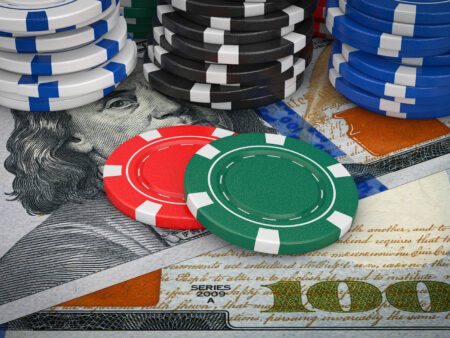Discover the art of reading poker tells and how to master the skill of deciphering body language at the poker table. Gain a valuable edge over your opponents with expert insights and practical tips.
The Art of Reading Poker Tells: Mastering Body Language
Poker is a game that extends beyond the cards you are dealt. It’s a battle of wits, intuition, and observation. While mastering the rules and strategies is crucial, understanding body language can provide valuable insights into the intentions and emotions of your opponents.
In this article, we will explore the art of reading poker tells and how to decipher the hidden messages conveyed through body language. By honing your skills in observing and interpreting nonverbal cues, you can gain a significant advantage at the poker table.
What are Poker Tells?
First, let’s define what poker tells are. Tells are subconscious actions or behaviors displayed by players that give away clues about the strength or weakness of their hand. These tells can vary from person to person but often involve small gestures, facial expressions, or changes in posture.
It’s important to note that not all tells are reliable indicators, as some players may deliberately fake them to deceive their opponents. However, if you observe consistent patterns of behavior, you can start to make informed deductions.
The Basics of Reading Poker Tells
To become a skilled tell reader, you need to pay close attention to the following aspects of body language:
- 1. Eye Movements: The eyes can reveal valuable information. A player who avoids eye contact might be trying to hide their excitement or disappointment, while dilated pupils could indicate a strong hand.
- 2. Facial Expressions: Facial expressions are a window into a player’s emotional state. A sudden smile or frown can provide insight into the strength of their hand. Look for micro-expressions and changes in expression during key moments of the game.
- 3. Posture: Pay attention to how players sit and carry themselves. A tense and rigid posture can indicate a strong hand, while a relaxed and slouched posture may signal weakness.
- 4. Hand Movements: The way players handle their chips or their cards can reveal their level of confidence. Nervous gestures like fidgeting or chip shuffling could indicate a weaker hand.
- 5. Timing: The timing of a player’s actions can also be telling. A quick call or bet might suggest a strong hand, while a longer pause before making a decision could indicate uncertainty or bluffing.
Understanding Player Profiles
While individual tells can provide valuable information, it’s important to consider the overall profile of your opponents. Some players naturally exhibit certain behaviors, while others may try to deliberately deceive you. By observing players consistently over time, you can create profiles that help you anticipate their actions.
For example, a player who consistently avoids eye contact may be more likely to bluff, while a player who fidgets when they have a strong hand may be trying to feign weakness. These profiles are not foolproof, but they can give you an edge when making decisions.
The Importance of Context
When reading tells, it’s crucial to consider the context in which they occur. A behavior that might indicate strength in one player could mean something entirely different in another. External factors such as the stakes, the player’s experience level, and their personal playing style all contribute to the overall picture.
Practice and Observation
Becoming proficient in reading poker tells takes practice and keen observation skills. Start by observing the behavior of your opponents during each hand, even when you’re not directly involved. Look for patterns and consistencies, and take notes if necessary.
Additionally, consider recording your own games and studying your own tells. By becoming aware of your own body language, you can work on eliminating any unintended behaviors that might give away information to your opponents.
Conclusion
Mastering the art of reading poker tells requires a combination of attentiveness, intuition, and practice. While no tell is 100% reliable, understanding the subtle cues of body language can provide you with a valuable edge in the game.
Remember, poker is a game of incomplete information, and reading tells allows you to extract additional information from your opponents. With time and experience, you can refine your skills and become a formidable force at the poker table.










